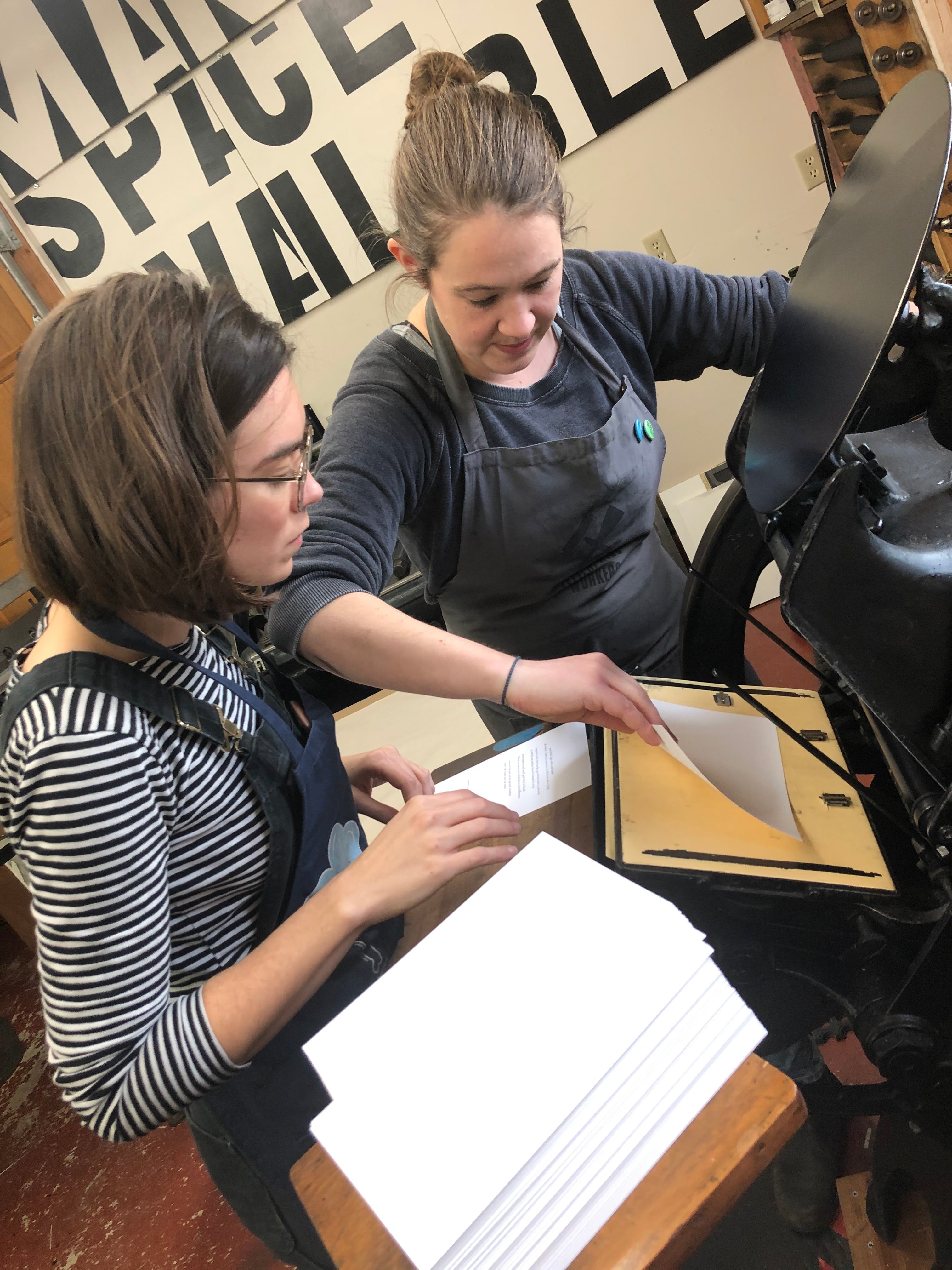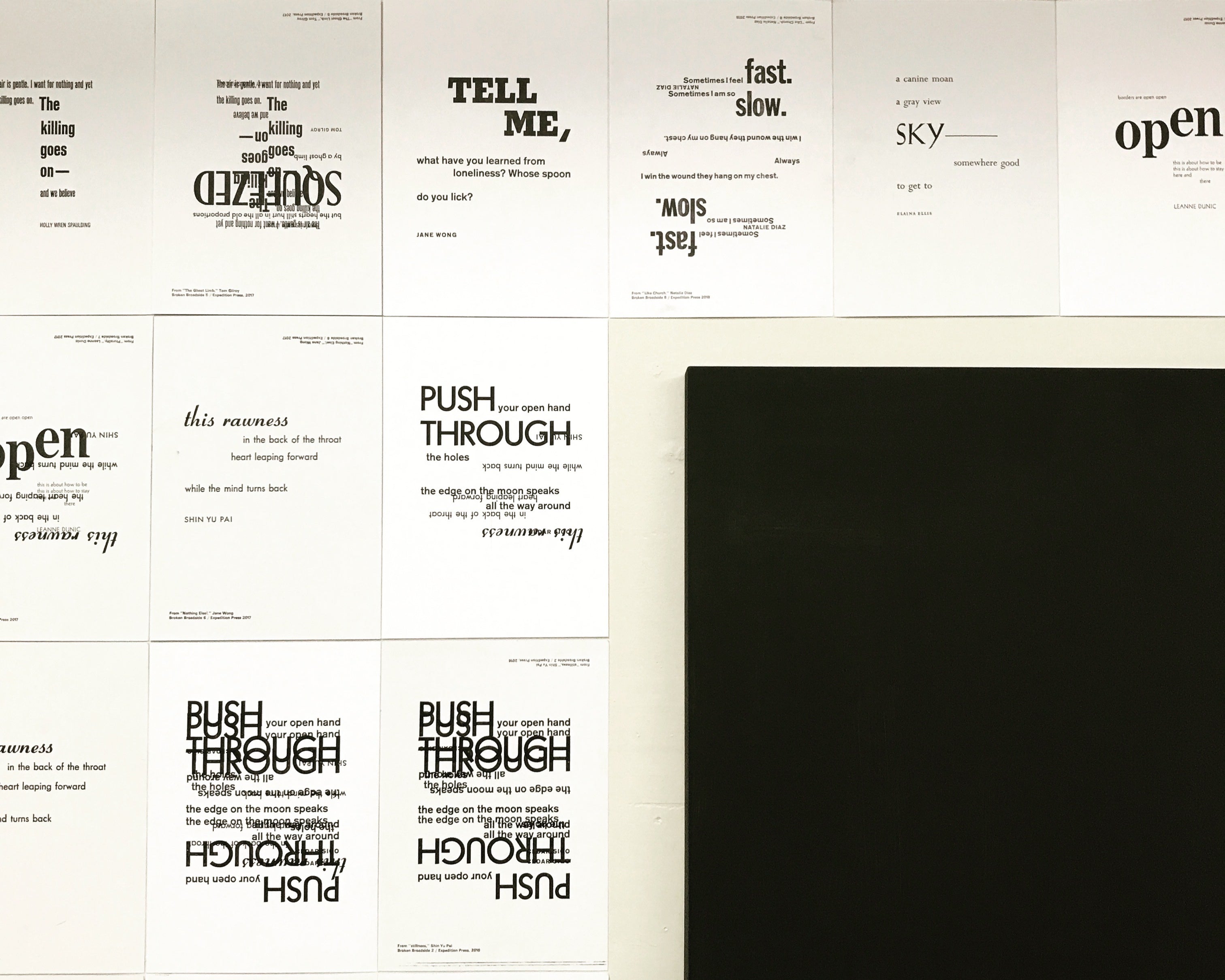Building an Art Show

New artwork is taking over my shop! Show opens May 31 in Seattle.
A year ago, at a windy roadside stop in South Dakota with a couple flickering bars of reception, I checked my email. There was a message from the manager of a gallery in downtown Seattle, whom I’d met at a couple openings. She was wondering whether I wanted to join next year? I gasped and rubbed the sand out of my eyes, read it again. Next month, new work in hand from my travels, I walked into Core Gallery. A fabulous conversation ensued, a few tears were shed, and a contract was signed.
I woke up six weeks later and thought wtf!? I don’t know what hell I’m doing.
Dreaming
I shrugged it off and focused on the work at hand over summer. Then, one sudden morning in early fall, I had a dream of my show fully realized. My morning pages were all over the walls translucent and transcending time and space, perfectly clear in my mind’s eye. I wrote it all down. Time passed. No better ideas occurred so I went with the dream.

How to start? First I kept tying it back to my design process for printing, where I read a text repeatedly, let it sift for its own unknown required time, and watch it distill into an abstract yet clear message. I set about reading my morning pages armed with post-it notes and a fresh notebook and pen where I was going to record the wild powerful insights I’d scribbled out in the past five years of daily writing practice and you know what, I started reading them, and two things happened. Well three.
I felt sick, I got super emotional, and then I got super bored.
Because, sheesh. Who wants to read all that crap? Not me. That’s why I write it down in the mornings. To get it out of me. And I have a rule of never printing anything that I myself don’t care to read. So that all went out the window.
Experimenting with materials

Experiments with the physical materials went better, painstaking as always with lots of insecurity and rabid research. As soon as I started working with the pages as objects, as physical matter and not metaphysical meaning-makers, it was a great relief and things got more interesting. I got scraps of cabinet-grade plywood and MDO (medium density overlay), learned the technical differences between gesso and oil ground, got safflower oil, linseed oil, wax varnish, gel medium.

I learned about french cleats and strongbacks, peppered my artist friends and my carpenter friends with incessant questions. I learned to dampen a wood surface a half hour before the first sanding, to gently raise the grain. I learned what rabbit skin glue crystals look like vs tiny air bubbles when you’re cooking traditional gesso. I learned to differentiate between grades of wheat paste, the best methods for straining it, and that even with the kind you don’t cook, if you let it sit overnight the graininess will dissipate.
I spent a bunch of time messing about with surface prep (wood, gesso, sanding) before moving on to working with the pages themselves. I had strong gnawing guilt and insecurity about using the original pages right up until the moment I tore the first one out, which felt great, and so I kept tearing.
I did a lot of layering experiments with the written pages, wheat paste, gesso, oil, and oil paints. Upon the first successful oiling experiment, I saw the writing on the back of the page lift out and blend in with the writing in the foreground, and there it was—the exact effect I had seen in my dream months back. That satisfied me enough to move forward.

Selecting pages from 44 notebooks; five years of daily stream-of-conscious writing upon waking (with coffee).
Conceptualizing
I had dozens of ideas about layering paint and print on top of these panels. I was sure these pages were just going to be the background. But as they formed themselves into their own grids moving through time mark by mark, it was clear they didn’t need more. Obfuscation is easy to come by. Simplicity is not. In fact I am sitting here now, having pasted up five of six panels, knowing they will look how I want them to look when I add the first coat of oil, but also knowing that once I do I can’t really go back to the layering/pasting part of the process, and that makes me extremely uncomfortable. I feel trapped in my own exposé. I feel mightily, mightily exposed.

Detail of mockup panel, pages wheat pasted to a gessoed wooden panel and then oiled.
Not that anyone can read my handwriting under normal conditions, let alone like this. And, I don’t care about what’s written in those pages. They are wild and weird and utterly mundane fragments of past selves. Through the process of putting these panels together I’ve come to think of them as specimens. Specimen sheets of daily life. It’s not about reading, it’s not about writing, it’s not about the creative process even—though of course those elements are at play and easily analyzed.
For me, it’s about existing. Finding a way through, imagining further than I think I can, hanging out at the edge of myself and looking around. It’s about waking up daily, and going to sleep daily, and the astonishing fact that we live our lives between these two transitional moments, from the subconscious to the self-conscious and back again, with such great trust and so little thought. We spend all our waking hours trying to make some meaning that we drop at a hat to fall asleep into the utter unknown. But the day, the waking time, what a scramble. The harsh composing of self every day to let it die every night, and then again the next.*

So a specimen. Six specimens, I offer up. Specimens of the moment of waking, negotiating the transition between awake and asleep. Conscious and subconscious. Above and below. The edge. Specimens from the edge, of the edge.
“Awake” will be up May 31–June 24 at Core Gallery, Seattle.
Official opening is June 1, unofficial party is June 3.
*This was written just after reading John Updike’s essay on “Self-Consciousness.” Other influential texts for this project include The Gift by Lewis Hyde, Specimen Days & Collect by Walt Whitman, and Anthony Froshaug’s essay “Typography is a grid.”
The passage into mystery always refreshes. If, when we work, we can look once a day upon the face of mystery, then our labor satisfies. We are lightened when our gifts rise from pools we cannot fathom. Then we know they are not a solitary egotism and they are inexhaustible. Anything contained within a boundary must contain as well its own exhaustion. The most perfectly balanced gyroscope winds down. But when the gift passes out of sight and then returns, we are enlivened. Material goods pull us down into their bones unless their fat is singed occasionally. It is when the world flames a bit in our peripheral vision that it brings us jubilation and not depression … we are alive only to the degree that we can let ourselves be moved.”
— Lewis Hyde, The Gift, pg 25“Down in the Woods, July 2d, 1882.-If I do it at all I must delay no longer. Incongruous and full of skips and jumps as is that huddle of diary-jottings, war-memoranda of 1862-’65, Nature-notes of 1877-’81, with Western and Canadian observations afterwards, all bundled up and tied by a big string, the resolution and indeed mandate comes to me this day, this hour,—(and what a day! What an hour just passing! the luxury of riant grass and blowing breeze, with all the shows of sun and sky and perfect temperature, never before so filling me, body and soul),—to go home, untie the bundle, reel out diary-scraps and memoranda, just as they are, large or small, one after another, into print-pages,{1} and let the melange’s lackings and wants of connection take care of themselves. It will illustrate one phase of humanity anyhow; how few of life’s days and hours (and they not by relative value or proportion, but by chance) are ever noted. Probably another point, too, how we give long preparations for some object, planning and delving and fashioning, and then, when the actual hour for doing arrives, find ourselves still quite unprepared, and tumble the thing together, letting hurry and crudeness tell the story better than fine work. At any rate I obey my happy hour’s command, which seems curiously imperative. May be, if I don’t do anything else, I shall send out the most wayward, spontaneous, fragmentary book ever printed.”
— Walt Whitman, Specimen Days & Collect, pg 1“To find the text, to stipulate the ways in which it gets manipulated, to cohere all the mutually-destructive (as they may, at first, seem) requirements into a still centre of quiet meaning: this needs a knowledge and a recognition of typography … Admit constraints: then, having admitted, fill with discovery.”
— Anthony Froshaug, “Typography is a grid”
Alongside these texts, a number of conversations over the past year have distinctly helped shape this work. My gratitude to Sarah Nichols, Geri McCormick, Carolina Veenstra, Matthew Carter, David Franklin, and Paul McClellan for their close attention, clear reactions, and pointed observations.



